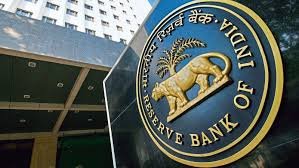RBI Conducts Massive Liquidity Infusion Through Variable Rate Repo Auctions
The Reserve Bank of India (RBI) has undertaken significant measures to tackle the prevailing liquidity deficit in the banking sector by conducting a series of Variable Rate Repo (VRR) auctions. In May 2024, the RBI infused Rs 7.75 trillion through nine VRR auctions, with the latest auction amounting to Rs 1.25 trillion.
Overwhelming Demand from Banks
The most recent VRR auction saw an overwhelming response, with banks submitting bids totaling Rs 11.4 trillion, which is nearly 47% higher than the RBI’s notified amount. This indicates the substantial demand for liquidity among banks. The weighted average rate at which banks borrowed during this auction was 56%.
Escalation of Liquidity Deficit in May 2024
The liquidity deficit in the banking system has risen sharply in May 2024. Key dates reflect this trend:
- May 19: Rs 1.3 trillion deficit
- May 20: Rs 1.48 trillion deficit
- May 22: Rs 2.37 trillion deficit
The average liquidity deficit for the first half of May stood at Rs 1.2 trillion, contrasting sharply with a surplus of Rs 20,240 crore in April 2024.
Role of Repo Auctions in Liquidity Management
Repo auctions are critical tools used by the central bank to inject liquidity into the financial system. These auctions allow banks to borrow funds overnight when interbank liquidity is insufficient, ensuring the smooth operation of banking and credit activities.
Recent Liquidity Adjustment Facility Operations
In April 2024, the RBI conducted a 4-day Liquidity Adjustment Facility (LAF) auction, offering Rs 50,000 crore through VRR. The LAF is a monetary policy tool that allows banks to either borrow from the RBI using repurchase agreements or lend to the RBI through reverse repos.
Liquidity Adjustment Facility Explained
The Liquidity Adjustment Facility (LAF) was introduced as part of the Narasimham Committee on Banking Sector Reforms in 1998. It plays a vital role in managing the banking system’s liquidity by allowing banks to adjust their liquidity positions. The RBI’s recent measures using LAF and VRR aim to balance liquidity levels, support credit operations, and maintain overall financial stability.

Why This News is Important
Impact on Banking Sector
This news is crucial for the banking sector as it highlights the RBI’s proactive approach to managing liquidity deficits. The significant infusion of liquidity helps banks meet their short-term funding needs, ensuring the stability and efficiency of financial operations.
Influence on Monetary Policy
The RBI’s use of VRR auctions reflects its broader monetary policy strategy to maintain adequate liquidity in the financial system. This move is critical for controlling inflation and fostering economic growth, making it essential for those studying monetary policy mechanisms.
Preparation for Competitive Exams
For students preparing for competitive exams, understanding the mechanics of repo auctions and liquidity management is vital. These topics are frequently covered in banking exams, civil services, and other government positions, making this news relevant for their studies.
Economic Implications
The infusion of liquidity has broader economic implications, influencing interest rates, lending practices, and overall economic activity. It is important for aspiring economists and policymakers to grasp these dynamics to better understand the economic landscape.
Insight into RBI’s Operations
This news provides insight into the operational strategies of the RBI, an important area of study for exams like IAS and PSCS. Knowing how the central bank addresses liquidity issues can help candidates answer questions related to banking and financial regulation.
Historical Context
Background of Repo Auctions
Repo auctions have been a key tool for the RBI since their introduction. They are used to manage short-term liquidity mismatches in the banking system. The concept of repurchase agreements allows banks to borrow funds by selling securities with an agreement to repurchase them later.
Narasimham Committee Reforms
The introduction of the Liquidity Adjustment Facility (LAF) was a recommendation of the Narasimham Committee on Banking Sector Reforms (1998). The LAF has since become a cornerstone of the RBI’s liquidity management framework, helping to stabilize the banking sector during periods of stress.
Previous Liquidity Challenges
Historically, the RBI has faced several liquidity management challenges, particularly during economic downturns. Past instances of liquidity infusions have been pivotal in maintaining financial stability, highlighting the importance of these tools in the central bank’s arsenal.
Key Takeaways from RBI’s Liquidity Infusion
| Serial Number | Key Takeaway |
|---|---|
| 1 | RBI conducted nine VRR auctions in May 2024, infusing Rs 7.75 trillion. |
| 2 | The latest VRR auction saw banks bid Rs 11.4 trillion, 47% higher than the notified amount. |
| 3 | Liquidity deficit in the banking system escalated to Rs 2.37 trillion by May 22, 2024. |
| 4 | Repo auctions and the Liquidity Adjustment Facility (LAF) are crucial tools for managing liquidity. |
| 5 | The LAF, introduced following the Narasimham Committee’s recommendations, helps balance liquidity and support credit operations. |
Important FAQs for Students from this News
What is a Variable Rate Repo (VRR) auction?
A Variable Rate Repo auction is a mechanism where the RBI lends funds to banks at varying interest rates. Banks bid for the funds, and the rates are determined based on these bids.
Why did the RBI conduct massive VRR auctions in May 2024?
The RBI conducted these auctions to address the significant liquidity deficit in the banking sector, ensuring that banks have sufficient funds to operate smoothly.
How does a liquidity deficit affect banks?
A liquidity deficit means that banks have less available cash to meet their short-term obligations, which can affect their lending capabilities and overall financial stability.
What is the Liquidity Adjustment Facility (LAF)?
The Liquidity Adjustment Facility is a tool used by the RBI to manage short-term liquidity mismatches in the banking system. It allows banks to borrow or lend funds overnight based on repurchase agreements.
Why is liquidity management important for the RBI?
Effective liquidity management ensures financial stability, controls inflation, and supports economic growth by ensuring banks have the necessary funds to operate efficiently.
Some Important Current Affairs Links















